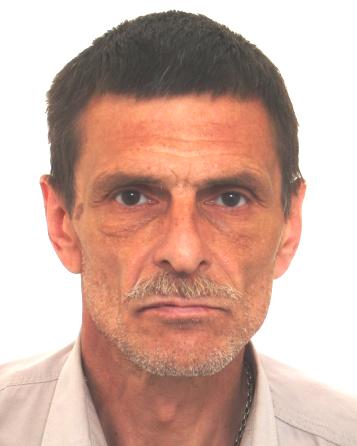
Target complex Programme for Research of NAS UKRAINE
Fundamental problems of hydrogen and renewable energy and fuel all technologies
Home |
Hydrogen production |
Hydrogen Storage |
Fuel cells |
|
|
|||||
General view of horizontal fermenter for molecular hydrogen obtaining with maximal destruction of food waste. |
Area of applications
Industry for disposal of environmentally hazardous mixed food waste, companies getting clean energy (H2) from environmentally hazardous food waste are referred to strategically important areas of applications. Developed biotechnology allows creating an international consortium that aims to expand the range of services by providing targeted customers with comprehensive solutions for expedited utilization of wastes with energy carriers obtaining and their subsequent transformation into electrical or thermal energy.
Brief description
The project concept is in development of regimes of microbial preparation use providing not only sustainable obtaining of ecologically pure energy – biohydrogen, but disposal of environmentally hazardous mixed food waste, that is their maximal destruction (tenfold reduction of their weight and volume in a short time). Horizontal fermenter with optimized construction will be used for research.
Fermenters with vertical type of mixing are commonly used in modern biotechnologies. Such fermenters are useful for obtaining of energy carriers (H2) from liquid (soluble) organic compounds. Fermenters with vertical type of mixing are not useful for microbial destruction of solid food waste due to several reasons.
First – concentration of solid waste particles at the bottom of fermenter.
Second – emersion of light particles to the surface of liquid phase.
Third – impossibility of simultaneous effective mixing of miscellaneous components of waste due to their different reological properties.
In view of this new type of fermenter with horizontal paddle mixing was developed. Stereometry of paddles provides steady mixing of all components in fermenter. It is expected that steady distribution of particles and microorganisms as well as optimal mixing will provide fast and effective destruction of waste and maximal synthesis of hydrogen. Accordingly, it is expected that investigation and optimization of regimes of food waste fermentation in developed horizontal fermenter will provide higher synthesis of hydrogen and effective destruction of food waste compared to use of common vertical fermenters.
Expected properties
Optimized regime of mass transfer of waste during their fermentation in horizontal fermenter. Optimal ratio of volumes of solid and liquid phases that will provide maximally effective process of waste destruction and hydrogen synthesis. Optimized physical and chemical conditions (рH and Eh) for effective destruction of food waste with biohydrogen obtaining in horizontal fermenter.
Advantages
Environmentally friendly granulated preparation containing combination of microorganisms and complex of compounds that cause their effective functioning provide efficient process of molecular hydrogen obtaining with maximal destruction of food waste. Optimization of cultivation regime during preparation use provides cost-effective utilization of complex organic waste. Speed of waste destruction is 5-20 times higher compared to other methods, decrease of waste volume and weight reaches 70-98%. Also valuable products can be obtained: methane (30-40 l from 1 kg of absolutely dry weight of waste) or molecular hydrogen (24-190 l/ kg), technically clean water (residual concentration of organic compounds doesn’t exceed 50 mg/l calculating to total Carbon), additional liquid and solid biofuels.
Competitors
The USA, Netherlands and Asian countries (Japan, South Korea and China) are the world leaders in development of biotechnological processes based on hydrogen fermentation use. Also these countries are the leaders in quantity of acting patents concerning developments of hydrogen obtaining from organic compounds.
Project development
During last 20 years biohydrogen production from organic waste is considered as a promising area of alternative energy. The main method of biohydrogen obtaining from food waste is dark fermentation - destruction of nutrients of food waste by hydrogen-synthesizing heterotrophic microorganisms. The interest in such way is driven by availability, widespread and low-cost of food waste as raw material to produce hydrogen. The efficiency of hydrogen obtaining is provided by a number of distinctive features to improve the efficiency of hydrogen production and maintaining constant optimal conditions for fermentation.
In particular, there are specific cultivation conditions (patent US 8003344 B2 Microbial hydrogen-producing process and system thereof NATIONAL CHUNG HSING UNIVERSITY, TAIWAN), maintaining of optimum pH (patent US 20070161104 A1 Waste management facilities for the production of hydrogen gas and reduction of greenhouse gases), use of methods of waste pre-treatment and extra energy sources (patent CN 102363794 A Method for producing hydrogen through kitchen waste enzymolysis and reinforced dark fermentation), maintaining of optimum concentration of nitrogen sources (patent CN 102367455 B Method for producing hydrogen by improving anaerobic digestion of kitchen waste through controlling ammonia nitrogen concentration) etc.
Hydrogen fermentation is used as a separate process for molecular hydrogen obtaining as energy carrier, as well as the first stage of two-stage process of hydrogen / methane fermentation for obtaining of gaseous energy carriers from organic waste (patent WO 2007075762 A2 Anaerobic phased solids digester for biogas production from organic solid wastes). However, two major conditions prevent implementation of these processes in industry. First is the assessment of technologies as insufficiently profitable. It is believed that the process is cost-effective when hydrogen yield is close to theoretical maximum - 4 moles H2 / mol glucose. However, during destruction of food waste an average yield of hydrogen is 2 moles of H2 / mol glucose. Another aspect is the low adaptability of the process - the complexity of its scaling.
Contact information
Executing : Zabolotny Institute of Microbiology and Virology of National Academy of Sciences of Ukraine.
Project 2 «Development of regime of molecular hydrogen obtaining with maximal destruction of food waste».
Project leader:
 Tashyrev Oleksandr B.
Tashyrev Oleksandr B.
Project Manager
Tel. +38 044 526-32-97
 Tashyreva Anna O.
Tashyreva Anna O.
responsible executive
responsible executive
 Govorukha Vira M.
Govorukha Vira M.
responsible executive
responsible executive